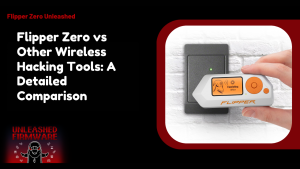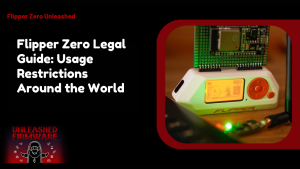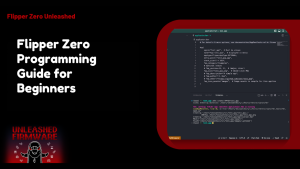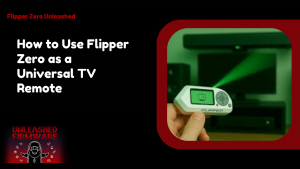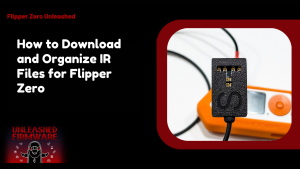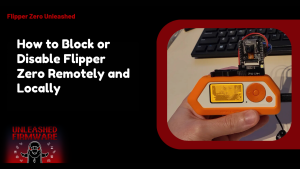Table of Contents
ToggleIntroduction To Flipper IRDB
If you’ve ever wished your Flipper Zero could do more than just the basics, the Flipper IRDB is here to make life super convenient! This compact infrared powerhouse enables you to control TVs, air conditioners, and nearly any device that uses a remote, all from your Flipper Zero. It’s like turning your gadget into a universal remote in the cutest, techiest way possible. Getting started with Flipper Zero IRDB is easier than you think.
Overview of Flipper‑IRDB
The Flipper IRDB is essentially Flipper Zero’s secret superpower for controlling IR devices. Think of it as a bridge between your Flipper and anything that relies on a remote. With this handy feature, you can store a massive library of infrared codes making it easy to operate TVs, sound systems, air conditioners and more all without digging for remotes.
How Flipper Zero Uses Infrared
Your Flipper Zero uses infrared signals to communicate with other devices, just like a regular remote. When you select a command from the Flipper Zero IR database, your Flipper sends a precise IR signal that your target device recognizes instantly.
What Flipper‑IRDB Can Do for You
The Flipper Zero IRDB is a game-changer for anyone who wants complete control over their devices using a single tool. With the Flipper Zero IR Remote Library, you can access a massive collection of infrared signals, enabling you to control TVs, air conditioners, fans, and many other household appliances effortlessly.
Supported Devices and Brands
- The Flipper Zero IRDB supports a wide range of brands, including Samsung, LG, Sony, Panasonic, and many more.
- It covers both popular electronics and niche appliances, making it highly versatile.
- The Flipper Zero IR database is regularly updated, adding new devices and models on a regular basis.
- This ensures your remote control options continue to grow over time.
- Compatibility extends to both entertainment devices (such as TVs and sound systems) and smart home devices.
Typical Use Cases for Infrared Control
With Flipper Zero IRDB, the possibilities are endless. You can use it to streamline your home setup, such as turning off all your devices when leaving the room or setting up movie mode to dim the lights and power on the TV automatically. The Flipper Zero Modules expand your device’s uses, complementing the IRDB for even more automation.
Setting Up Flipper Zero for IRDB Use
Getting your Flipper Zero ready for the Flipper Zero IRDB is exciting and simpler than it sounds! Before controlling devices, ensure your infrared module is connected correctly and that your Flipper Zero firmware is up to date. This setup ensures everything works smoothly and your commands are precise.
Connecting the Infrared Module
- Attach the infrared module carefully: Gently connect the infrared (IR) module to your Flipper Zero. Ensure it aligns with the dedicated port.
- Check the fit: The module should fit snugly without any gaps. Avoid forcing it, as improper attachment could damage the connector or the module itself.
- Ensure a proper connection: A secure attachment guarantees that your IRDB Flipper can communicate effectively with other devices, providing accurate signal transmission.
- Test with a simple device: Point the IR module at a basic IR-controlled device such as a TV, fan, or stereo.
Installing Required Firmware or Updates
To make full use of the Flipper Zero IRDB, your device should have the latest firmware installed. Updates often bring bug fixes, new features, and better compatibility with infrared devices. This ensures your commands hit the target every time. Always install updates carefully by following the official instructions.
After updating, restart your Flipper Zero to ensure smooth access to the IR database.
Preparing the Device for First Use
Before capturing or sending IR signals take a moment to configure your Flipper Zero. Adjust settings like signal strength learning mode and device naming. This makes it easier to organize your IRDB flipper codes later and keeps everything neat and accessible.
A quick first-use prep also helps avoid misfires or missed signals. Once ready, you can confidently start storing new codes from your remotes and enjoy the convenience of having a fully functional Flipper Zero IR database at your fingertips.
Learning and Storing IR Codes
Learning IR codes with your Flipper Zero is where the magic truly begins! By using the Flipper Zero IRDB, you can capture signals from almost any remote and store them for later use. This makes controlling multiple devices a breeze, all from a single gadget.
With a bit of practice, your flipper IRDB library will grow into a powerful IR toolkit. Keeping your code organized is just as crucial as learning them..
How to Capture IR Signals from Remotes
Start by pointing your remote at the Flipper Zero’s infrared module and activating the learning mode in the Flipper Zero IRDB. Press the buttons you want to record one at a time. Your Flipper Zero will accurately read and store each signal, building your personal IRDB Flipper collection.
Make sure you hold the remote steadily and at the correct distance. Minor adjustments can make a big difference in capturing clean, usable signals..
Organizing and Naming Stored Codes
After capturing your IR signals, naming and categorizing them is key. Use clear, descriptive labels for each device and function. This way, your Flipper Zero IR database stays organized, and sending commands later is fast and stress-free.
You can create folders or groups within the Flipper IRDB, such as TV AC or Sound System making everything easy to navigate. A well-organized database saves time and keeps your setup fun rather than frustrating.
Tips for Accurate Signal Learning
Accuracy matters when capturing IR codes. Make sure your Flipper Zero is fully charged and properly connected to the infrared module. Avoid obstacles and bright sunlight which can interfere with signal reading. Following these tips ensures your IRDB flipper learns clean signals every time.
Also, test each learned signal before storing it permanently in the Flipper Zero IRDB. A quick verification helps avoid repeated learning and keeps your Flipper Zero IR database reliable and ready for seamless use.
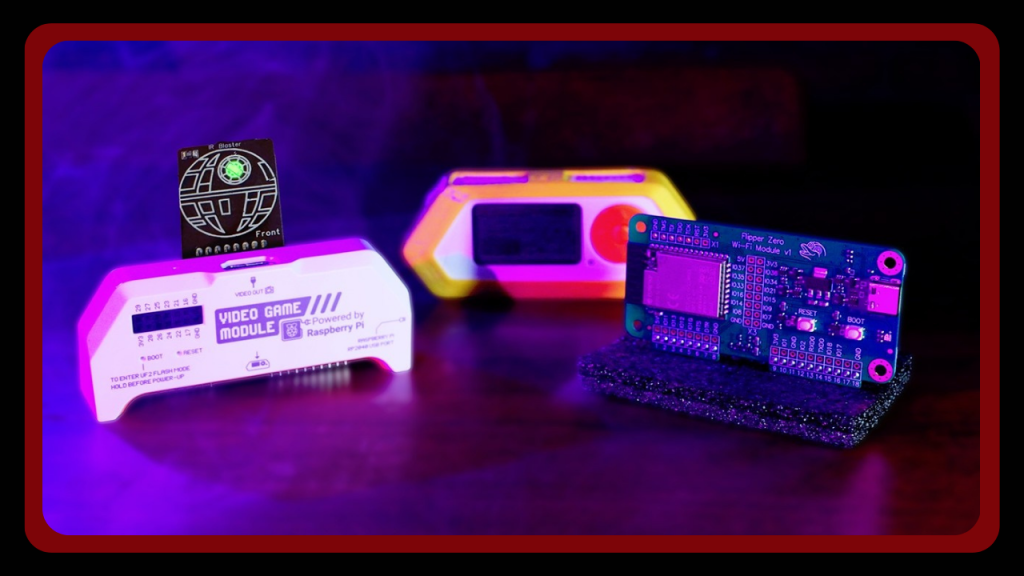
Using IR Codes to Control Devices
Once your flipper zero IRDB is loaded with signals, it’s time to put them to work! Sending commands is as simple as selecting the desired device from your Flipper Zero IR database and pressing the corresponding button. You’ll be amazed at how quickly you can control TVs, air conditioners, and other IR devices without juggling multiple remotes.
Sending Commands via Flipper Zero
To send an IR command, select the stored code from your Flipper Zero IRDB, point your device at the target, and activate the signal. The Flipper Zero instantly communicates with the device, replicating the original remote’s function perfectly. Keep your flipper zero IR database well-maintained so you can send commands quickly and avoid delays.
Automating Repeated Actions
With the IRDB flipper, you can automate repetitive tasks, such as adjusting volume or switching channels. This feature saves time and makes your Flipper Zero feel like an intelligent assistant rather than just a remote. Setting up automation requires selecting the correct IR codes from your Flipper Zero IR database and scheduling them.
Troubleshooting Common IR Issues
Sometimes IR signals don’t reach the device correctly. Ensure there’s no obstruction and the module is properly connected. Updating firmware can also improve Flipper Zero’s IR database compatibility with new devices.
If a command fails, recapturing the signal with your Flipper Zero IRDB often fixes the problem. Always double-check alignment and distance for consistent performance.
Advanced Features of Flipper‑IRDB
Your Flipper Zero IRDB offers advanced options, such as grouping devices and customizing commands. Grouping allows you to control multiple devices simultaneously, turning your Flipper Zero into a powerful hub. Custom commands enable you to combine signals into sequences, allowing a single button press to turn on your TV sound system and lights simultaneously. This level of control showcases the true potential of your Flipper Zero IR database.
Grouping Devices and Codes
Organize similar devices into groups within your Flipper Zero IR database. For example, place all living room devices in one group and bedroom devices in another. This makes sending commands faster and more intuitive. Group control also works with automated actions.
Using your IRDB flipper, you can trigger multiple devices at once creating a smooth coordinated environment with minimal effort.
Sharing Codes Between Devices
Flipper Zero allows you to share your Flipper Zero IRDB codes with friends or other devices. Exporting codes ensures that everyone can benefit from your saved signals without having to start from scratch. This feature is perfect for households or offices with multiple Flipper Zeros.
Sharing codes keeps everyone on the same page and enhances the functionality of each Flipper Zero IR database.
Customizing Commands for Efficiency
Fine-tune your IRDB flipper by customizing commands. Rename buttons, combine actions, or adjust timing for perfect execution. This makes controlling devices quicker and reduces mistakes. A well-customized Flipper Zero IR database lets you handle complex setups effortlessly.
Once tailored, your Flipper Zero becomes more than a remote; it’s a smart personal control center.
Safety Tips and Best Practices
Using Flipper IRDB is exciting, but a little care ensures your device runs smoothly and safely. One important step is avoiding conflicts between devices. If two remotes or your Flipper Zero IRDB are sending commands at the same time, signals can clash and confuse your electronics.
Avoiding Device Conflicts
When working with a Flipper Zero IR database, duplicate signals can lead to chaos. For example, if two devices share similar IR codes, pressing one command might trigger both. To avoid this, label your saved codes clearly and keep them organized into folders.
Using the grouping option in Flipper Zero IRDB also helps separate living room devices from bedroom ones. This simple habit saves confusion and prevents multiple devices from acting at once.
Ensuring Reliable Signal Transmission
A strong signal means fewer errors. Keep your IRDB flipper within range and make sure there’s no interference from other electronics. Testing different distances helps you find the sweet spot for your setup.
If a command doesn’t go through, recheck the stored IR code in your Flipper Zero IR database. Sometimes re-capturing the signal gives a sharper, more reliable copy.
Keeping Firmware Updated
Firmware updates aren’t just about new features; they often improve how your Flipper Zero IRDB handles signals. Updated software ensures your device remains compatible with the latest gadgets and avoids bugs. Make it a habit to check for updates every few weeks.
A well-updated Flipper Zero IR database means smoother performance, better security, and fewer problems in the long run.
Conclusion
Exploring the world of Flipper IRDB turns your Flipper Zero into more than just a gadget; it becomes your universal controller. By learning, storing, and sending IR codes you can manage TVs, ACs speakers and so much more with ease.
With the Flipper Zero IRDB you’re not just replacing remotes; you’re streamlining your setup in a fun and practical way. Staying organized with your Flipper Zero IR database and keeping firmware updated ensures smooth performance every time.
FAQs
Can Flipper Zero control all infrared devices?
Not all, but most common devices, such as TVs, ACs, and stereos, work with Flipper Zero IRDB.
How accurate is the IR signal learning feature?
It’s very accurate, especially when you capture signals in a clear line of sight with your IR module. For more details on hardware, see Flipper Zero Unleashed Hardware Mods.
Can multiple IR codes be sent at once?
Yes! With grouping in your Flipper Zero IR database, you can trigger multiple devices simultaneously.
Is Flipper-IRDB compatible with third-party modules?
In most cases, yes. As long as the module supports standard IR, your Flipper Zero IRDB will work.
How do I update Flipper Zero for IRDB use?
Simply install the latest firmware to ensure your IRDB flipper runs smoothly and takes advantage of new features.
Can IR codes be exported or shared?
Absolutely. Codes can be shared between devices, so your Flipper Zero IR database is always handy.
What to do if a device doesn’t respond?
Try relearning the signal with your Flipper Zero IRDB, double-check the line of sight, and confirm the firmware is up to date.
Latest post:



